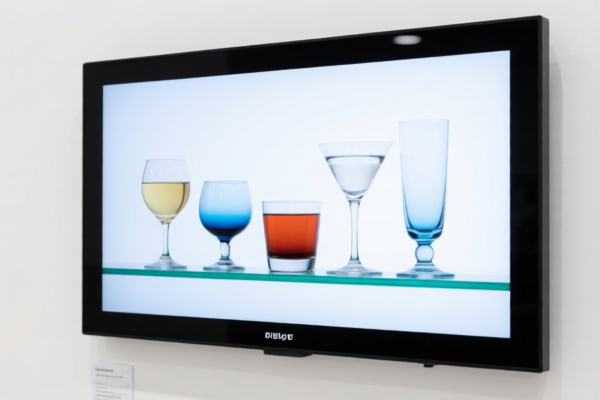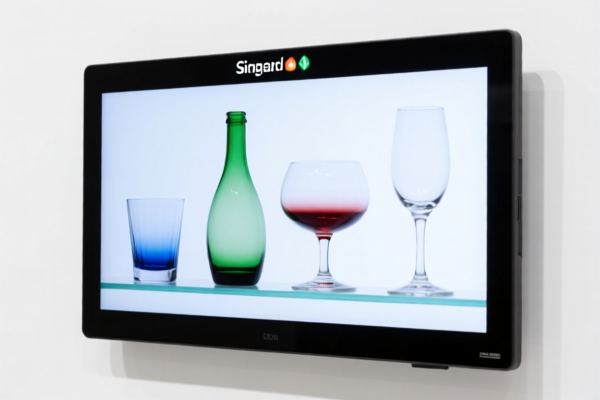| HS Code | Official Doc | Tariff Rate | Origin | Destination | Effective Date |
|---|---|---|---|---|---|
| 8517790000 | Doc | 87.5% | CN | US | 2025-05-12 |
| 8517140080 | Doc | 30.0% | CN | US | 2025-05-12 |
| 8524919000 | Doc | 32.0% | CN | US | 2025-05-12 |
| 8528593370 | Doc | 42.5% | CN | US | 2025-05-12 |
| 8524119000 | Doc | 32.0% | CN | US | 2025-05-12 |




Touch Screen
A touch screen is an input device that allows users to interact with a computer or device by physically touching the display. It functions as both an input and output device, displaying information while simultaneously accepting commands through touch.
Materials & Technologies
Several technologies enable touch screen functionality, each with varying characteristics:
- Resistive Touch Screens: Composed of two layers of electrically conductive material separated by a small gap. Pressure on the screen brings the layers into contact, registering the touch coordinates. Generally less expensive, but offer lower image clarity and are susceptible to damage.
- Capacitive Touch Screens: Utilize a transparent electrode layer that creates an electrostatic field. Touching the screen alters this field, pinpointing the touch location. Offer high clarity, responsiveness, and multi-touch capabilities. Require a conductive object (typically a finger) for operation.
- Infrared Touch Screens: Employ an array of infrared beams and sensors around the edges of the screen. Touching the screen breaks the beams, registering the touch point. Can be used with any object, but are susceptible to interference from ambient light.
- Surface Acoustic Wave (SAW) Touch Screens: Use ultrasonic waves across the screen surface. Touching disrupts the waves, determining the touch location. Offer high image clarity and durability, but are sensitive to contaminants on the screen.
- Optical Touch Screens: Employ cameras and image processing to track touch points. Can support large screen sizes and multi-touch, but require calibration and can be affected by ambient light.
Purpose & Function
The primary purpose of a touch screen is to provide a direct and intuitive interface for interacting with digital devices. Functionally, they translate physical touch into electrical signals that the device's operating system interprets as commands. This eliminates the need for separate input devices like mice, trackpads, or keyboards.
Usage Scenarios
Touch screens are ubiquitous in modern technology, found in a wide range of applications:
- Smartphones & Tablets: The primary input method for these mobile devices.
- Public Kiosks: Used for information access, ticketing, and self-service applications.
- Point-of-Sale (POS) Systems: Enable streamlined transaction processing.
- Automotive Navigation & Entertainment Systems: Provide in-vehicle control and information access.
- Medical Equipment: Allow sterile and precise control of devices.
- Gaming Consoles & Handhelds: Offer interactive gaming experiences.
- Industrial Control Panels: Enable operator control and monitoring of machinery.
Common Types & Features
- Projected Capacitive Touch (PCT): The most common type found in smartphones and tablets, offering multi-touch support and high responsiveness.
- Multi-Touch: Allows simultaneous detection of multiple touch points, enabling gestures like pinch-to-zoom and rotation.
- Gesture Recognition: Interprets specific touch patterns as commands.
- Haptic Feedback: Provides tactile confirmation of touch input through vibrations or force feedback.
- Screen Size & Resolution: Vary depending on the application, ranging from small displays on wearables to large interactive displays.
- Protective Coatings: Often include anti-glare, anti-fingerprint, and scratch-resistant coatings.
The declared goods are touch screen products. These are electronic components designed for data input through physical contact with a display. They function by detecting the presence and location of a touch within the display area, utilizing technologies such as resistance, electrostatic capacity, acoustic pulse recognition, or infrared lights. They are typically incorporated into apparatus with a display.
The following HS codes are relevant based on the provided reference material:
- 8537.10.80.00: This HS code covers parts suitable for use solely or principally with the apparatus of heading 8535, 8536 or 8537. Specifically, it refers to touch-sensitive data input devices (so-called "touch screens") without display capabilities, for incorporation into apparatus having a display. The subheading specifies "Other" and indicates a voltage not exceeding 1,000 V. The applicable tax detail is:基础关税: 0.0%, 加征关税: 25.0%, 2025.4.2后加征关税: 30.0%, with a total tax of 55.0%.
- 3920.99.50.00: This HS code covers other plates, sheets, film, foil and strip, of plastics, noncellular and not reinforced, laminated, supported or similarly combined with other materials. Specifically, it refers to those of other plastics, and "Other". The applicable tax detail is:基础关税: 5.8%, 加征关税: 25.0%, 2025.4.2后加征关税: 30.0%, with a total tax of 60.8%.
- 3920.99.10.00: This HS code covers other plates, sheets, film, foil and strip, of plastics, noncellular and not reinforced, laminated, supported or similarly combined with other materials. Specifically, it refers to those of other plastics, and film, strip and sheets, all the foregoing which are flexible, and over 0.152 mm in thickness, and not in rolls. The applicable tax detail is:基础关税: 6.0%, 加征关税: 25.0%, 2025.4.2后加征关税: 30.0%, with a total tax of 61.0%.
Customer Reviews
No reviews yet.